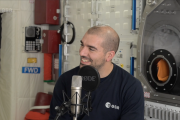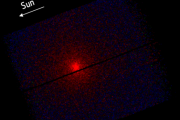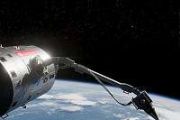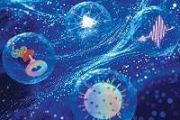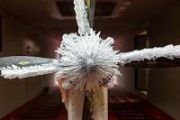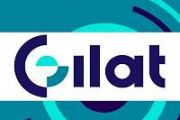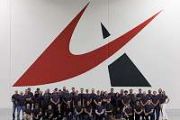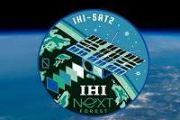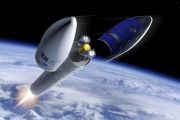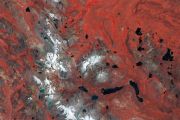
Copernical Team
NASA rover surmounts Jezero crater rim to begin next science campaign
 NASA's Perseverance rover has successfully climbed to the top of Jezero Crater's rim, reaching a landmark location called "Lookout Hill." This achievement follows months of challenging terrain navigation and marks the beginning of an exploration phase into an entirely new region on Mars.
The ascent, which spanned 3 0.5 months and climbed 1,640 vertical feet (500 meters), included traversin
NASA's Perseverance rover has successfully climbed to the top of Jezero Crater's rim, reaching a landmark location called "Lookout Hill." This achievement follows months of challenging terrain navigation and marks the beginning of an exploration phase into an entirely new region on Mars.
The ascent, which spanned 3 0.5 months and climbed 1,640 vertical feet (500 meters), included traversin Artemis II core stage positioned for integration
 NASA's Space Launch System (SLS) Moon rocket core stage is now vertical inside High Bay 2 of the Vehicle Assembly Building at NASA's Kennedy Space Center in Florida. The maneuver was completed on Tuesday, Dec. 10, 2024, marking a significant step in preparation for the Artemis II mission.
The core stage, which arrived at Kennedy Space Center on July 23, had previously been stored horizonta
NASA's Space Launch System (SLS) Moon rocket core stage is now vertical inside High Bay 2 of the Vehicle Assembly Building at NASA's Kennedy Space Center in Florida. The maneuver was completed on Tuesday, Dec. 10, 2024, marking a significant step in preparation for the Artemis II mission.
The core stage, which arrived at Kennedy Space Center on July 23, had previously been stored horizonta M87 jet observations reveal rare gamma-ray outburst
 The supermassive black hole at the heart of Messier 87 (M87), known for hosting a colossal relativistic jet, has produced a rare gamma-ray flare. This event marks the first high-energy gamma-ray outburst from M87 in over a decade, offering researchers an unprecedented opportunity to study the extreme conditions near a black hole's event horizon.
The findings, led by the Event Horizon Teles
The supermassive black hole at the heart of Messier 87 (M87), known for hosting a colossal relativistic jet, has produced a rare gamma-ray flare. This event marks the first high-energy gamma-ray outburst from M87 in over a decade, offering researchers an unprecedented opportunity to study the extreme conditions near a black hole's event horizon.
The findings, led by the Event Horizon Teles A new galaxy, much like our own
 Stunning new photographs by a Wellesley College-led team of astronomers have revealed a newly forming galaxy that looks remarkably similar to a young Milky Way.
The extraordinary images - taken with NASA's James Webb Space Telescope - show a galaxy that glitters with 10 distinct star clusters that formed at different times, much like our own Milky Way.
Cocooned in a diffuse arc, and
Stunning new photographs by a Wellesley College-led team of astronomers have revealed a newly forming galaxy that looks remarkably similar to a young Milky Way.
The extraordinary images - taken with NASA's James Webb Space Telescope - show a galaxy that glitters with 10 distinct star clusters that formed at different times, much like our own Milky Way.
Cocooned in a diffuse arc, and Juno identifies localized magma chambers driving Io's volcanic activity
 NASA's Juno mission to Jupiter has unveiled that volcanoes on Jupiter's moon Io are powered by localized magma chambers rather than a global magma ocean. This discovery resolves a decades-old mystery regarding the geological origins of Io's extreme volcanic activity.
The findings were detailed in a study published on Dec. 12 in Nature and discussed during a media briefing at the American G
NASA's Juno mission to Jupiter has unveiled that volcanoes on Jupiter's moon Io are powered by localized magma chambers rather than a global magma ocean. This discovery resolves a decades-old mystery regarding the geological origins of Io's extreme volcanic activity.
The findings were detailed in a study published on Dec. 12 in Nature and discussed during a media briefing at the American G Lucy completes key Earth gravity assist maneuver
 NASA's Lucy spacecraft executed a critical gravity assist maneuver on Dec. 12, 2024, skimming just 220 miles (360 kilometers) above Earth's surface. This close approach, occurring at 11:15 p.m. EST, propels the spacecraft on a new trajectory through the asteroid belt and toward the Jupiter Trojan asteroids - objects never previously visited by any spacecraft.
The maneuver marks Lucy's seco
NASA's Lucy spacecraft executed a critical gravity assist maneuver on Dec. 12, 2024, skimming just 220 miles (360 kilometers) above Earth's surface. This close approach, occurring at 11:15 p.m. EST, propels the spacecraft on a new trajectory through the asteroid belt and toward the Jupiter Trojan asteroids - objects never previously visited by any spacecraft.
The maneuver marks Lucy's seco NASA aims to solve Lunar housekeeping's biggest issue - infinite dust!
 If you thought the dust bunnies under your sofa were an issue, imagine trying to combat dust on the Moon. Dust is a significant challenge for astronauts living and working on the lunar surface. So, NASA is developing technologies that mitigate dust buildup enabling a safer, sustainable presence on the Moon.
A flight test aboard a suborbital rocket system that will simulate?lunar gravity is
If you thought the dust bunnies under your sofa were an issue, imagine trying to combat dust on the Moon. Dust is a significant challenge for astronauts living and working on the lunar surface. So, NASA is developing technologies that mitigate dust buildup enabling a safer, sustainable presence on the Moon.
A flight test aboard a suborbital rocket system that will simulate?lunar gravity is Japan's Space One delays Kairos rocket launch again
This request seems a bit unusual, so we need to confirm that you're human. Please press and hold the button until it turns completely green. Thank you for your cooperation!
Press and hold the button
If you believe this is an error, please contact our support team.
185.132.36.159 : 2bec6fa1-bbf8-461c-bced-dacf4d22
Uncrewed aircraft systems traffic management expands beyond line of sight
 NASA is advancing its Uncrewed Aircraft Systems Traffic Management Beyond Visual Line of Sight (UTM BVLOS) initiative to meet the global surge in drone usage for various applications.
Drones, or uncrewed aircraft systems (UAS), are increasingly used for services ranging from package delivery to emergency response operations such as search and rescue. Presently, these flights are largely re
NASA is advancing its Uncrewed Aircraft Systems Traffic Management Beyond Visual Line of Sight (UTM BVLOS) initiative to meet the global surge in drone usage for various applications.
Drones, or uncrewed aircraft systems (UAS), are increasingly used for services ranging from package delivery to emergency response operations such as search and rescue. Presently, these flights are largely re Black holes at the heart of Milky Way's largest star cluster reshaped in new research
 For decades, scientists have debated the source of unusual star movements in Omega Centauri, the Milky Way's largest star cluster. Recent research, incorporating new pulsar data, provides clarity, suggesting that a cluster of stellar-mass black holes, rather than a single intermediate-mass black hole (IMBH), is responsible.
Omega Centauri, home to nearly ten million stars, is located in th
For decades, scientists have debated the source of unusual star movements in Omega Centauri, the Milky Way's largest star cluster. Recent research, incorporating new pulsar data, provides clarity, suggesting that a cluster of stellar-mass black holes, rather than a single intermediate-mass black hole (IMBH), is responsible.
Omega Centauri, home to nearly ten million stars, is located in th 






